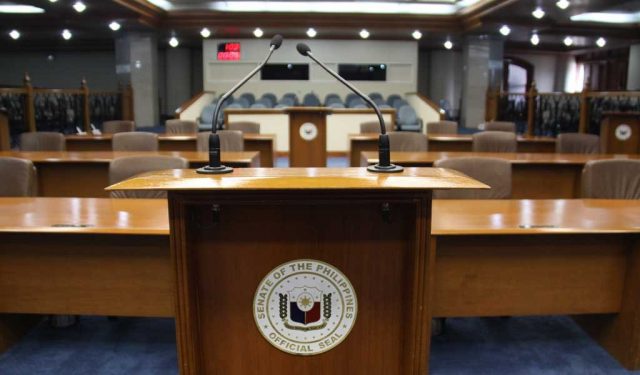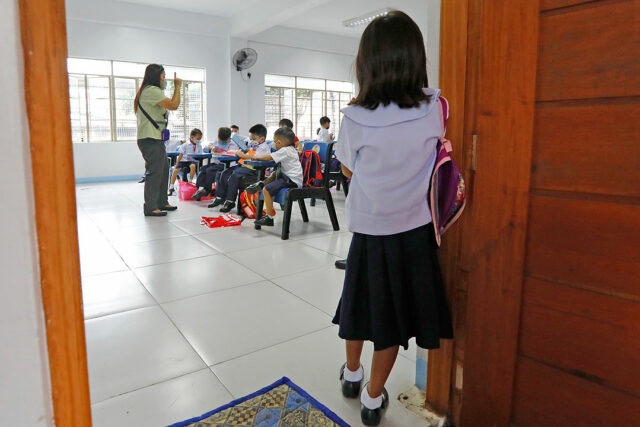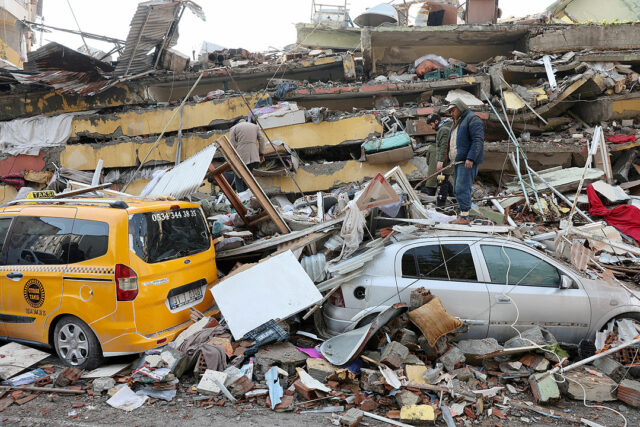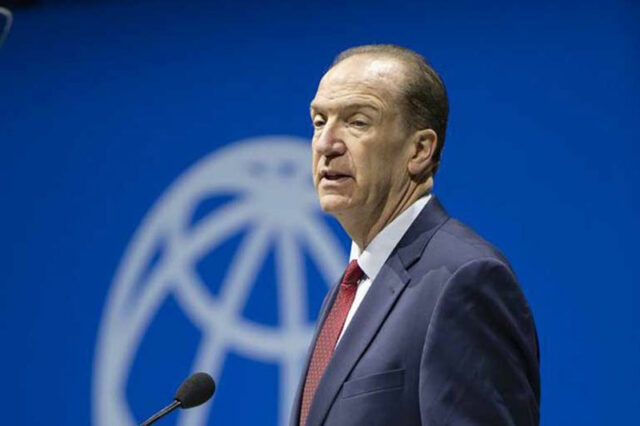For some inexplicable reason, the Traditional Latin Mass has become the villain.
This amidst allegations that some prominent or influential members of the Catholic clergy have been caught or accused of sexual improprieties, generally with young men. One was famously caught using the dating app Grindr. Still another was accused of abusing nuns about a decade ago.
Church corruption is also in the news, with this or that report of clerical persecution in China, while the Vatican Bank is again being hounded by charges of financial manipulations.
Take those within the context that, since Vatican II, attendance at Mass (e.g., attendance by Filipino Catholics has fallen to 56%), those availing of the sacrament of confession, marriages and baptisms (e.g., 57% of newborn Filipinos are illegitimate, with teenage pregnancies and marriage annulments on the rise) have steadily deteriorated. Even belief in the core teaching of Transubstantiation fell significantly:
A “new Pew Research Center survey finds that most self-described Catholics don’t believe this core teaching. In fact, nearly seven-in-10 Catholics (69%) say they personally believe that during Catholic Mass, the bread and wine used in Communion ‘are symbols of the body and blood of Jesus Christ.’ Just one-third of US Catholics (31%) say they believe that ‘during Catholic Mass, the bread and wine actually become the body and blood of Jesus.’
In addition to asking Catholics what they believe about the Eucharist, the new survey also included a question that tested whether Catholics know what the church teaches on the subject. Most Catholics who believe that the bread and wine are symbolic do not know that the church holds that transubstantiation occurs. Overall, 43% of Catholics believe that the bread and wine are symbolic and also that this reflects the position of the church. Still, one-in-five Catholics (22%) reject the idea of transubstantiation, even though they know about the church’s teaching.” (“Just one-third of US Catholics agree with their church that Eucharist is body, blood of Christ,” August 2019, https://pewrsr.ch/3I1ekn3).
Priestly ordinations are also down: “After skyrocketing from about 27,000 in 1930 to 58,000 in 1965, the number of priests in the United States dropped to 45,000 in 2002. By 2020, there will be about 31,000 priests — and only 15,000 will be under the age of 70. Right now there are more priests aged 80 to 84 than there are aged 30 to 34.” (“The Stark Fruits of Vatican II,” Michael Davies, The Stark Fruits of Vatican II (catholicapologetics.info))
There is one area — aside from the vibrant faith of the Catholics in Africa — where Catholic churches are filled to the brim, where the faithful do take the time to study and speak out on the teachings of the Church, where Mass attendance is robust, and young couples are marrying more and more and — equally importantly — having more and more children to be later baptized into the Catholic faith.
That is the Traditional Latin Mass community.
And that — sadly and ironically — is what is seemingly being suppressed by Church authorities.
For non-Catholics, a short note: the Traditional Latin Mass isn’t a Mass merely said in Latin. Today’s “ordinary Mass” (i.e., the Novus Ordo) can also be celebrated in Latin. Instead, as Pope Benedict XVI pointed out: “the two forms of the Mass [are] as follows: The Novus Ordo is the ordinary form of the Roman Rite, and the Latin Mass is the extraordinary form. Both are valid, and any qualified priest can celebrate either form.” (See peterboroughdiocese.org).
After the incredibly gracious release of the Apostolic Letter Summorum Pontificum, which allowed priests and the faithful greater freedom to celebrate the Mass in its pre-Vatican II form, came the quite puzzling Traditiones Custodes, which — a mere 14 years later — abrogated substantially the freedoms granted by the former.
But the logic of Summorum is quite beautiful in its simplicity and correctness: what was true and valid for 2,000 years could not all of a sudden be considered otherwise and discarded just like that.
And this is not a view shared by “Tradicals” alone:
“The Traditional Latin Mass isn’t just extraordinary in its form — its attendance among 18- to 29-year-olds bucks the downward trends in religiosity among that demographic.
“Pew Research data shows that only around a quarter of Catholics between the ages of 18 and 29 attend church once a week or more, compared to 98% of Latin Mass goers in the same demographic, according to research published by the Priestly Fraternity of St. Peter.
“The research also shows that young people’s move toward tradition is largely self-motivated rather than the outcome of outside influence: ‘We can see that personal preferences (reverence, curiosity, solemnity, and music) account for 58% of the total, while peer influences (friends, spouses) account for 18% of the total. Thus, to the tune of 76%, the impetus to attend the Latin Mass among 18- to 39-year-olds seems to be largely coming internally from within their own generation, rather than being inherited from previous generations’.” (“3 Reasons Why the Latin Mass Is So Attractive to Young People (According to a 22-Year-Old),” NCRegister, August 2021).
And indeed, many of today’s prominent (and quite pious) Catholics have been drawn to the serene glories of the Traditional Latin Mass: from famous theologian and Opus Dei faithful Scott Hahn, to US Supreme Court Justices Clarence Thomas and (the late) Antonin Scalia, to political commentator Michael Knowles, to recent Super Bowl game winning kicker Harrison Butker.
Unfortunately, many senior members of the clergy seem determined to put down the Traditional Latin Mass, calling the younger priests and younger laity that expressed enthusiasm for the Extraordinary Form of being out of touch, “dinosaurs,” or stuck in the past.
But, as respected philosopher and exorcist Fr. Chad Ripperger pointed out, it is precisely the older clergy that is out of touch: stuck in the pop culture sounds and look of the 1960s and 1970s, of hippy ecumenism, and the “if it feels good, do it” movement.
And this is precisely borne out by the younger generation that prefer the Traditional Latin Mass: “Felt banners, open-concept churches, guitar masses, and basically every hymn written after 1968 that were once ‘pastoral’ and ‘inclusive’ are now ‘boomer’ and ‘cringe’.”
For the young, our future, they read it accurately: the Traditional Latin Mass (TLM) is a rebellion against modernism, of shallow change for the sake of change. The TLM represents both an anchor and compass, it — more than anything else seen — embodies the idea of a Church eternal and forever new.
If the argument against the TLM is that it attracts schismatics or “sede vacantists,” then that is highly fallacious: first because it assumes a causality, second it creates a strawman, and third it confuses a problem with a wrong message, as well as defective induction. If the problem is the schismatics, then address that without having to destroy something validly recognized by the Church for two millennia. There is simply no need to throw the baby out along with the bath water.
The Traditional Latin Mass is simply beautiful and embodies what a sacrament should be. That it appeals to our senses should not be discounted because that is precisely one reason why a sacrament was made in the first place. The sights and sounds, the smells, even taste and touch — are all geared to make us pay attention not to the priest but to the proper center of our worship: God.
Equally importantly, the Traditional Latin Mass addresses a long felt need amongst the faithful for piety and solemnity, which is getting harder and harder to find despite the generally available Novus Ordo Masses around.
A false calumny against the TLM is that it is elitist. Not so. Attend a TLM and you will see faithful from all walks of life, rich or poor, educated and the simple, from the more mature and many of the young. It is common to know of the faithful traveling many miles just to attend a TLM Mass. It is a congregation of varying personalities and backgrounds but sharing in common a love for God and the eternal and inherent truths taught by the Church.
If by “Catholic” is meant universality, then the foregoing, read alongside consideration of Mass attendance trends, show the Traditional Latin Mass is fully Catholic indeed.
Finally, the Traditional Latin Mass ultimately embodies and fulfills our desire for obedience to the Church. That we surrender our ego and constant need for novelty and change in respect to all the millions of faithful that have gone before us and those still to come. That in worshipping God, we do it not how we want it but in united communion with all the faithful, seen or unseen.
GK Chesterton insightfully wrote: “Do not be so open minded that your brains fall out.” And that: “the object of opening the mind, as of opening the mouth, is to shut it again on something solid.” Or, to paraphrase a great Catholic, Flannery O’Conner, if in the end all religion or beliefs are the same, then “to hell with it.” Because a Church open to everything, willing to compromise on anything, ultimately stands for nothing.
Indeed. As St. Josemaria Escriva plainly put it: “Holy intransigence is not bigotry.” Because true charity can only be with truth.
And because of that, it may very well be that the future of the Catholic Church lies in the “intransigence” of those gathering persistently to hear the Traditional Latin Mass.
Jemy Gatdula is a senior fellow of the Philippine Council for Foreign Relations and a Philippine Judicial Academy law lecturer for constitutional philosophy and jurisprudence
https://www.facebook.com/jigatdula/
Twitter @jemygatdula












